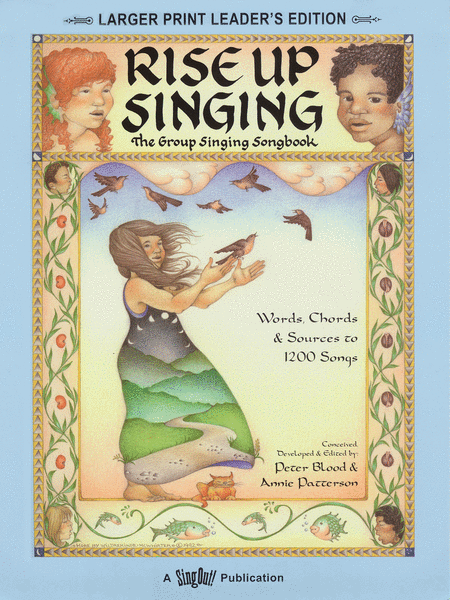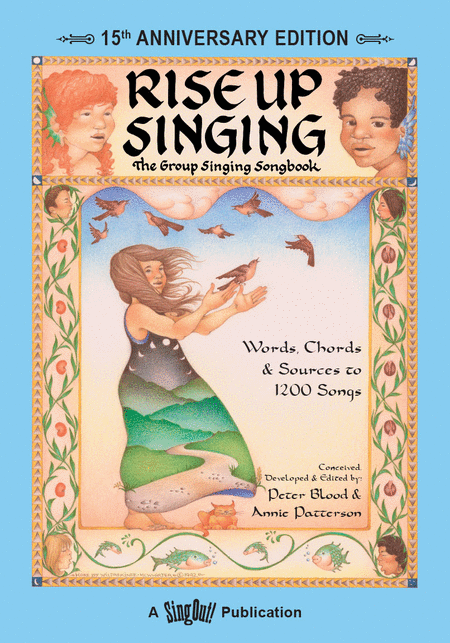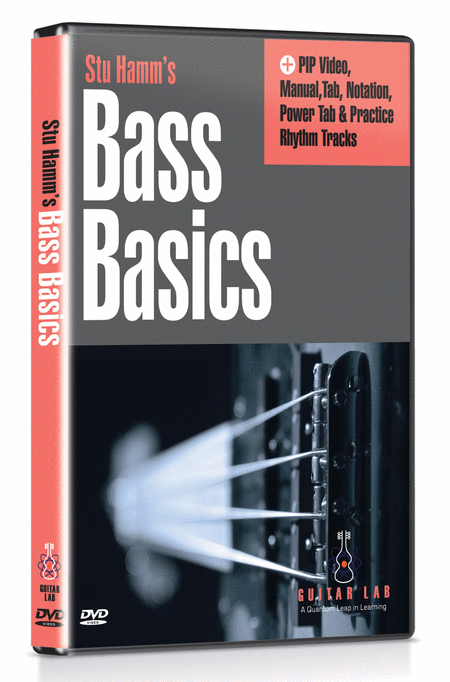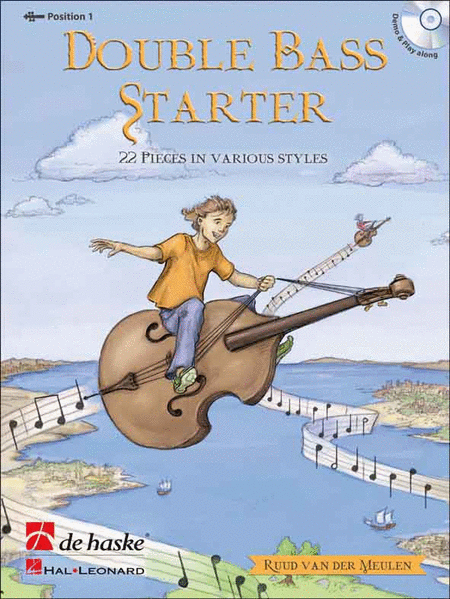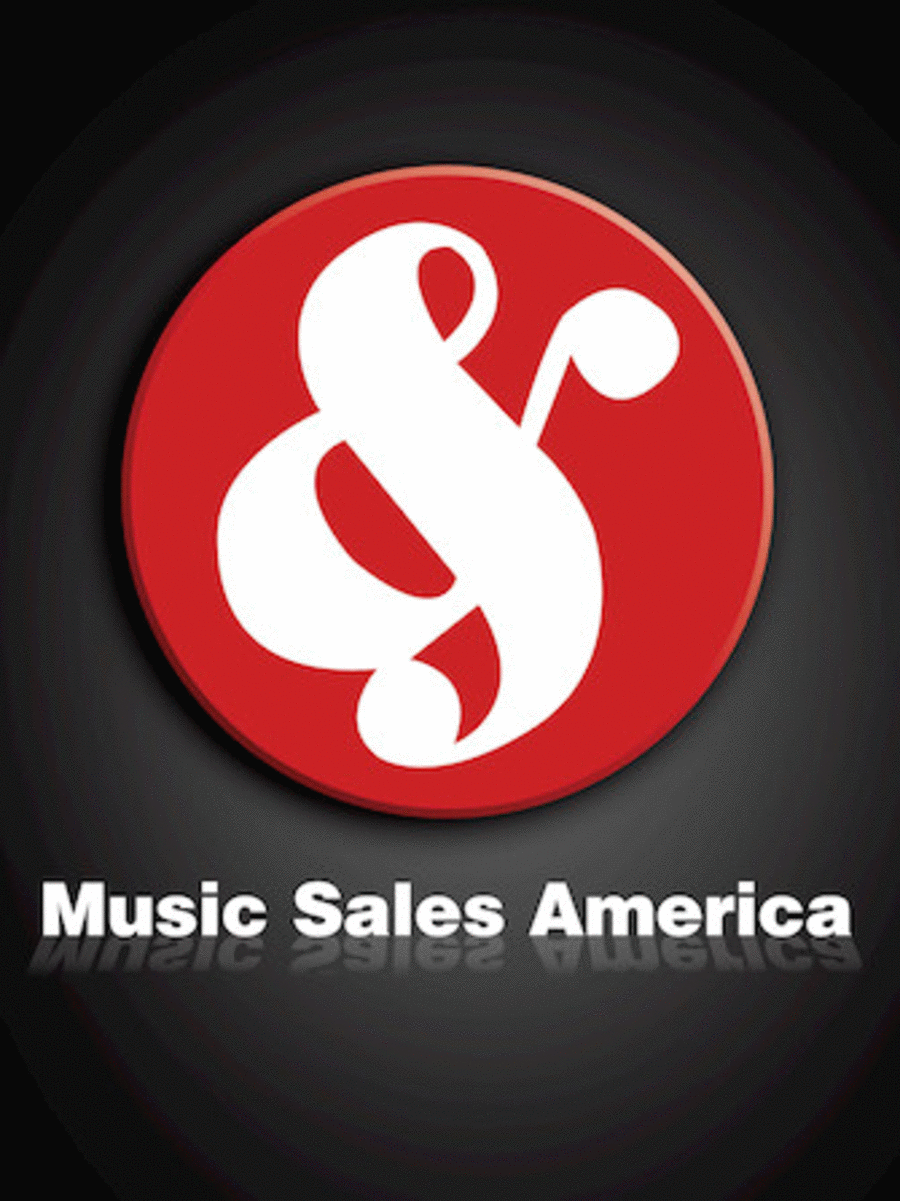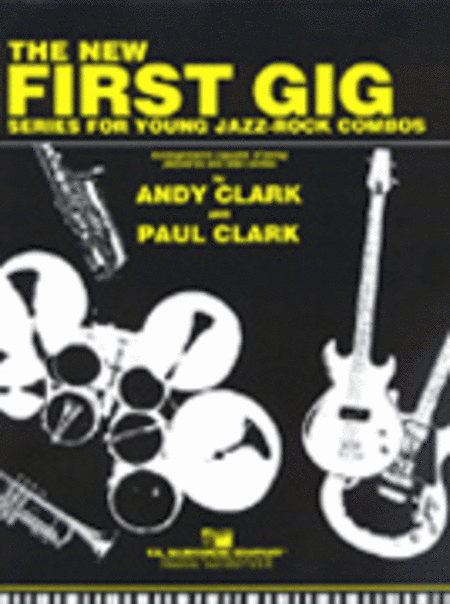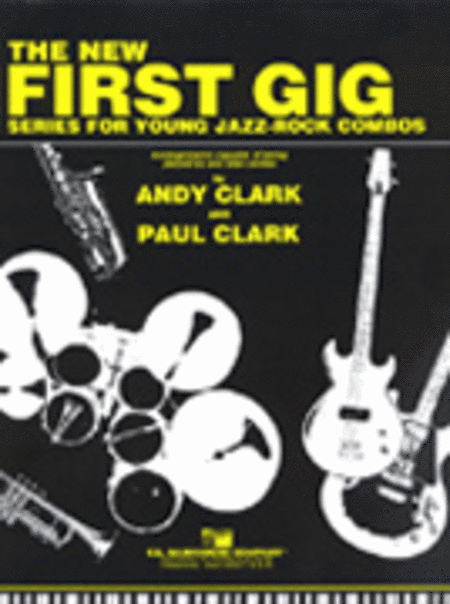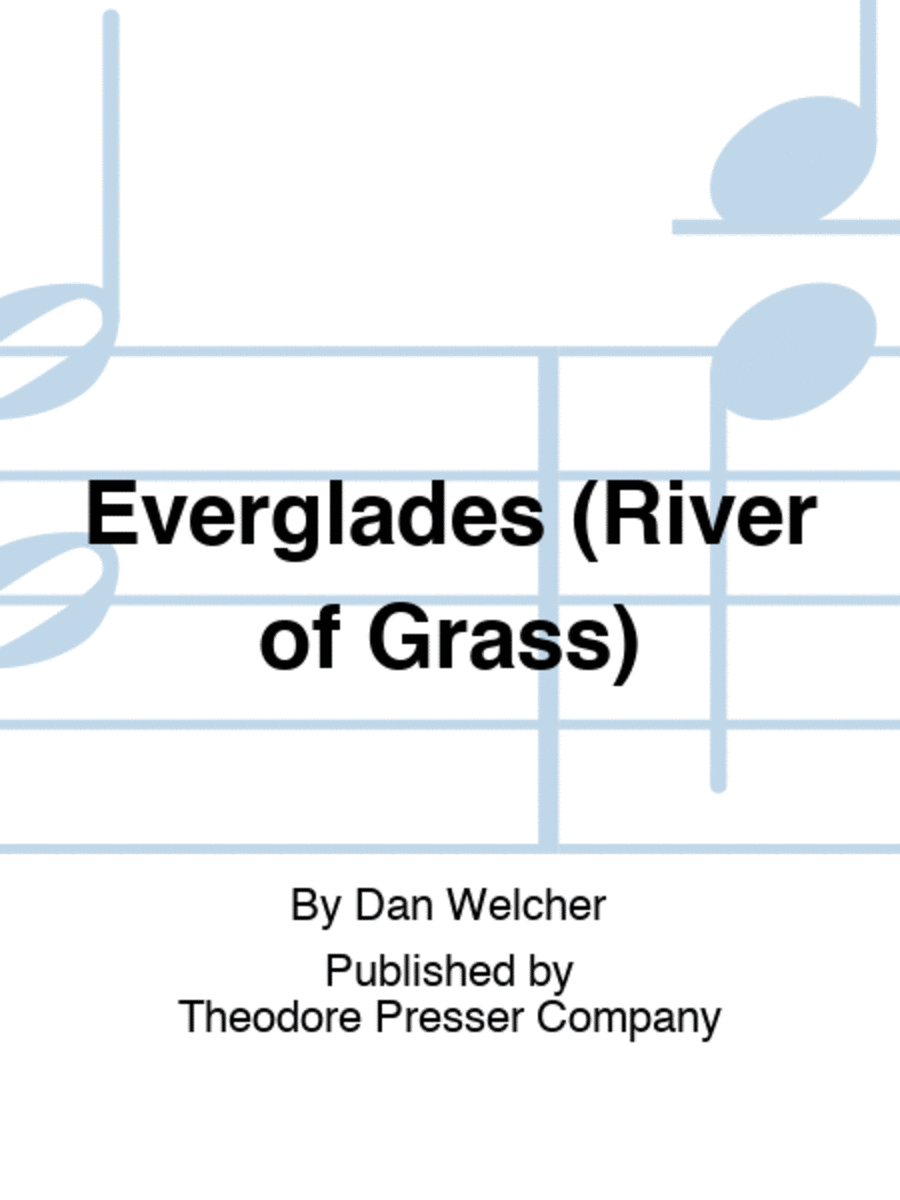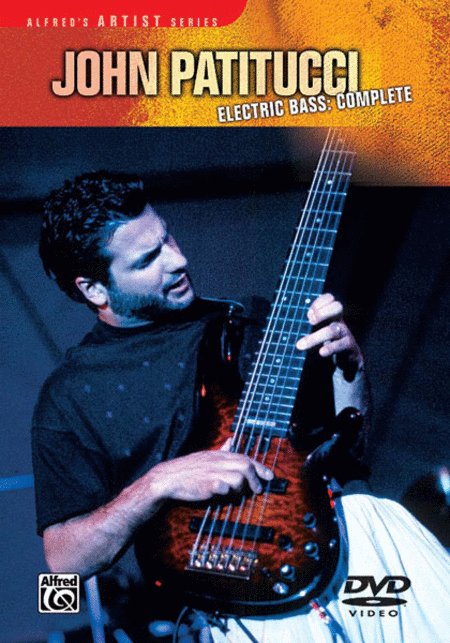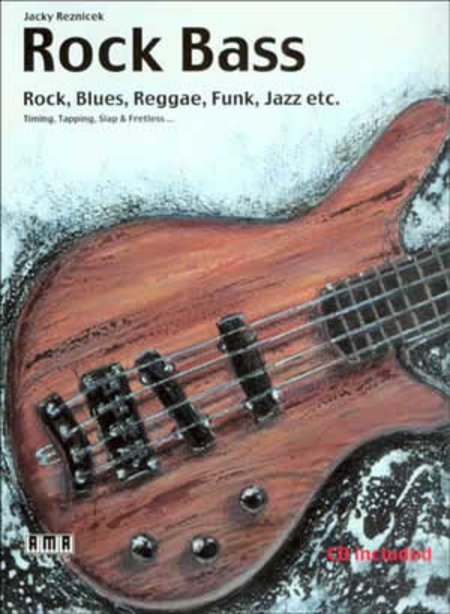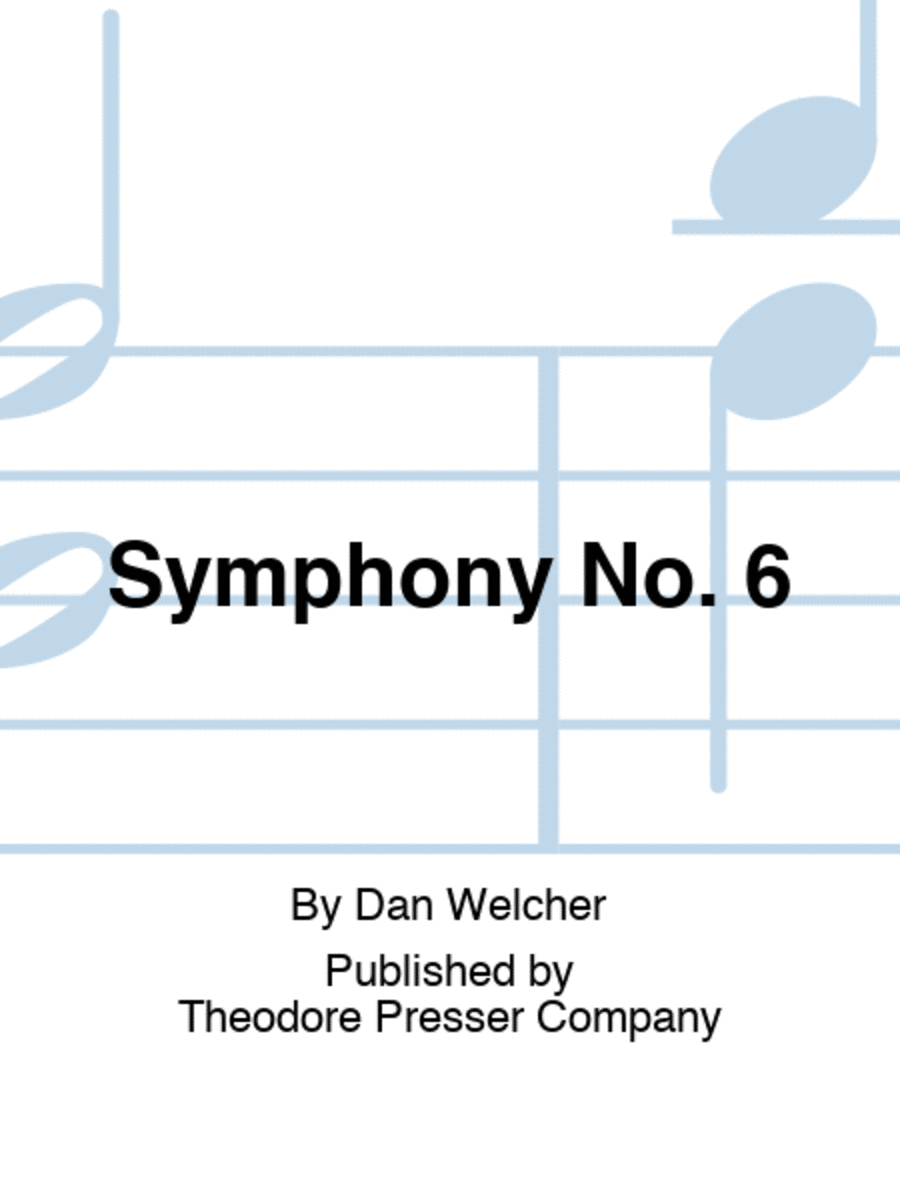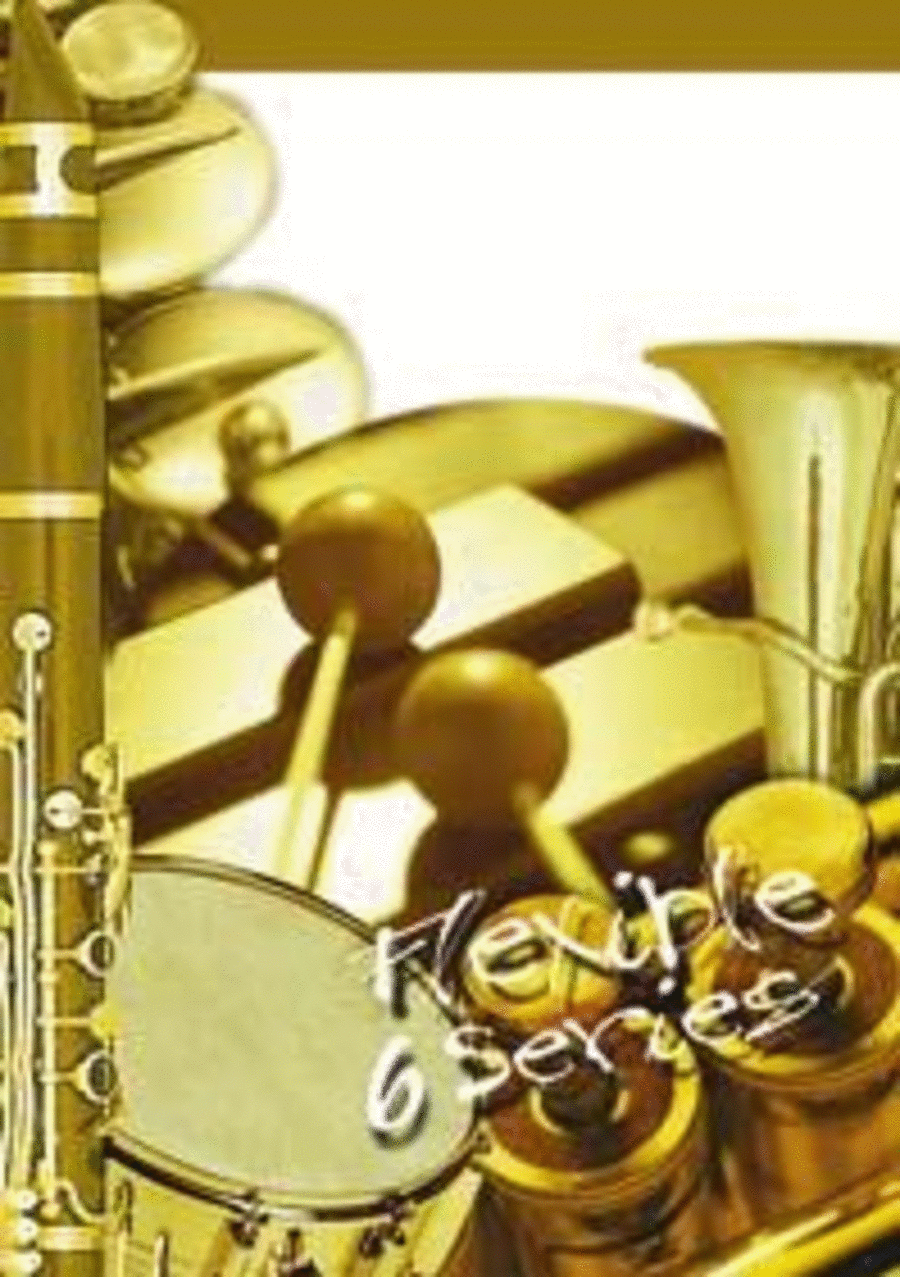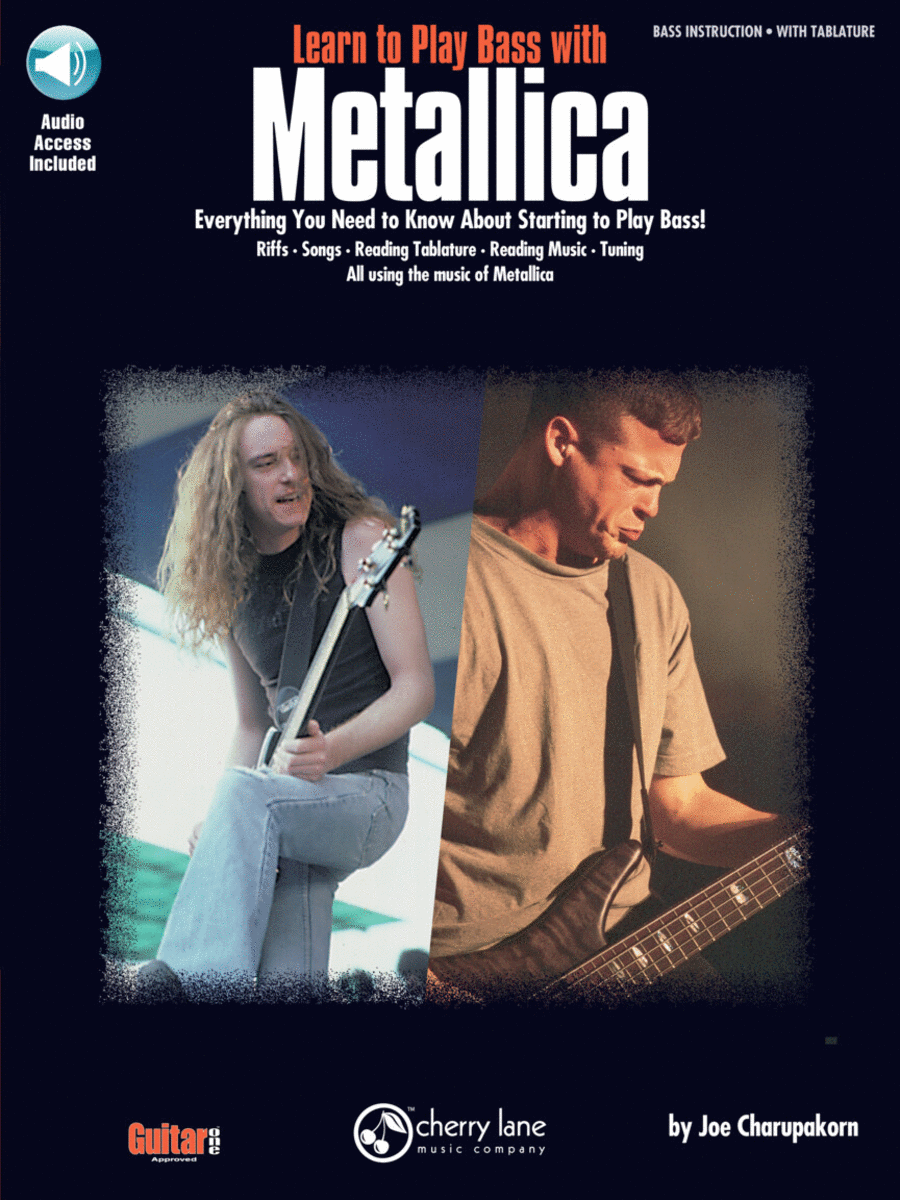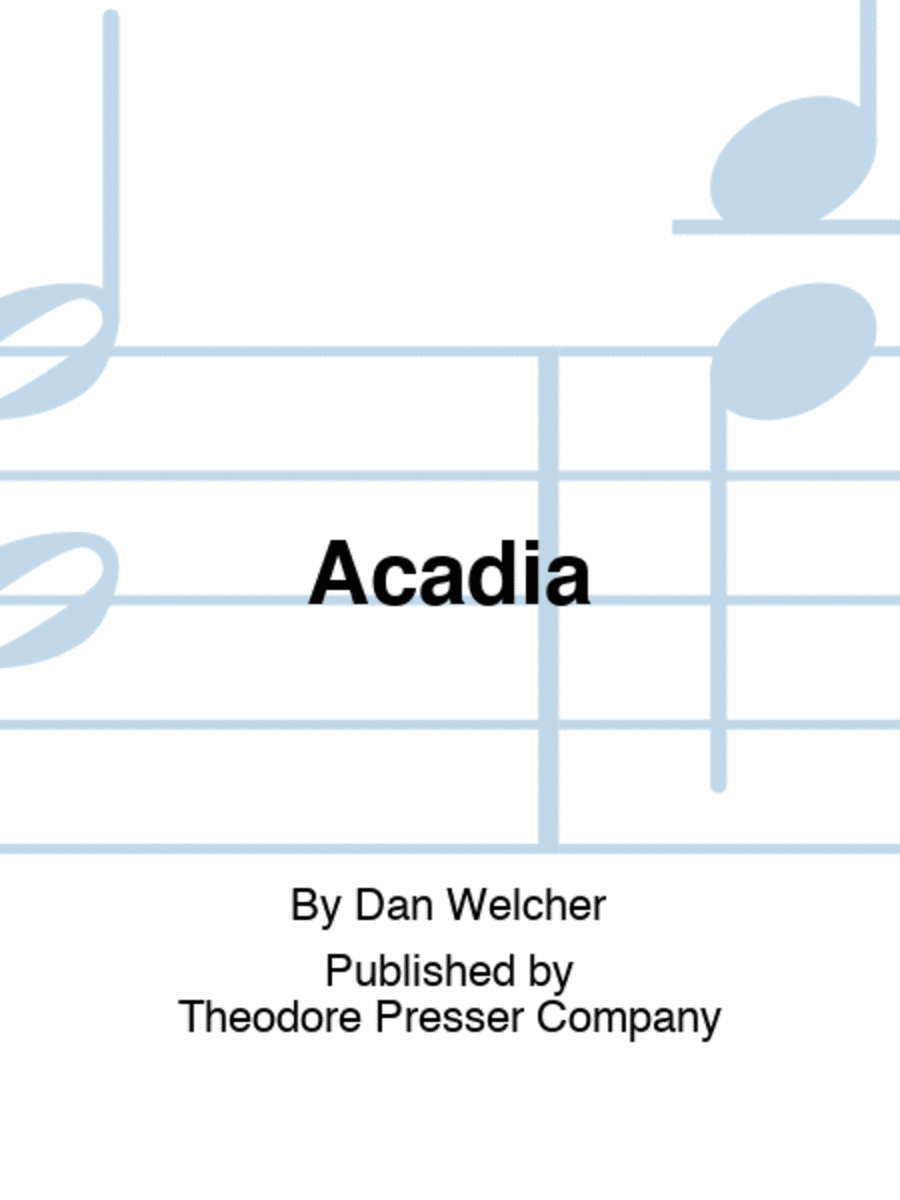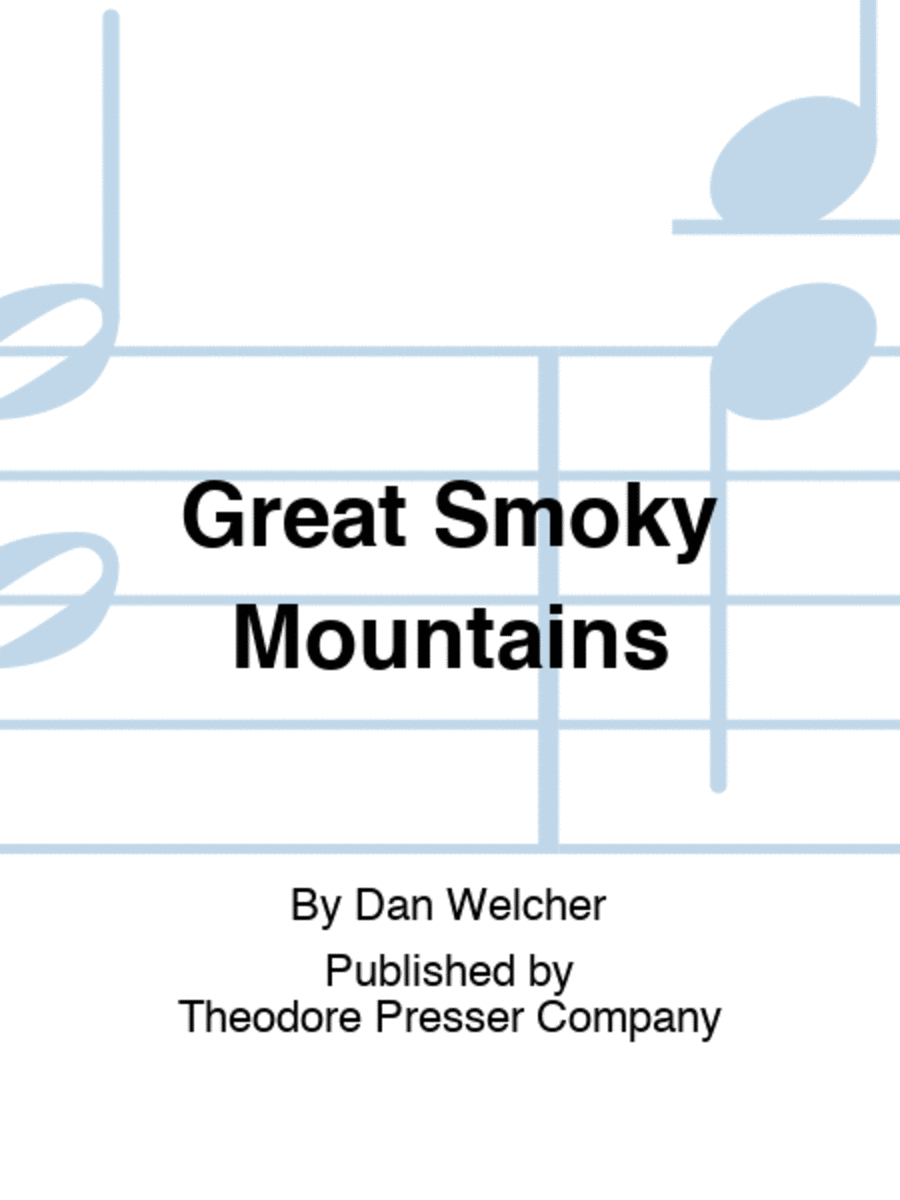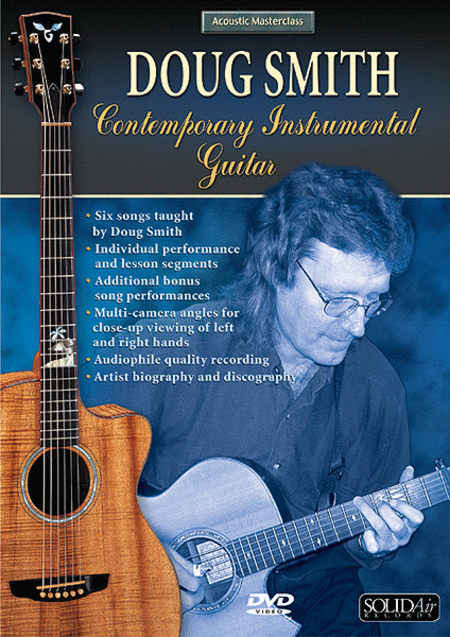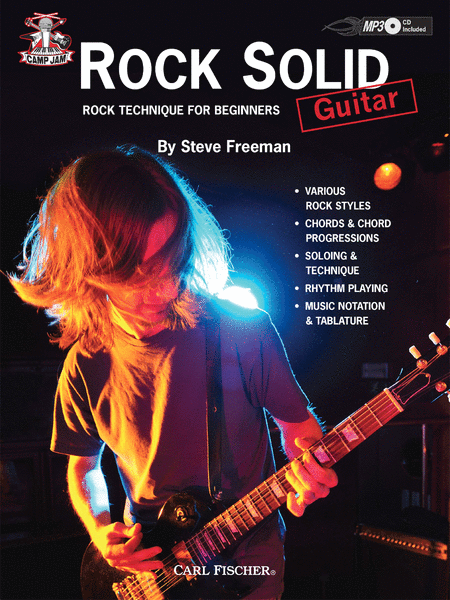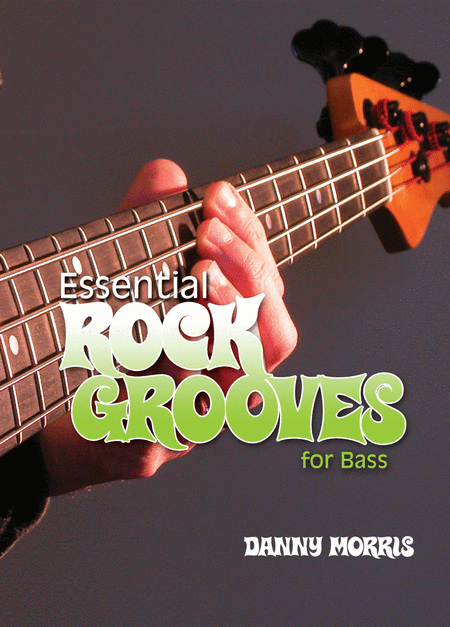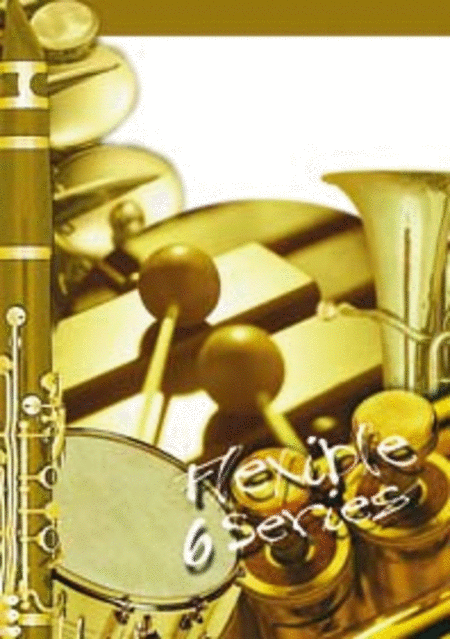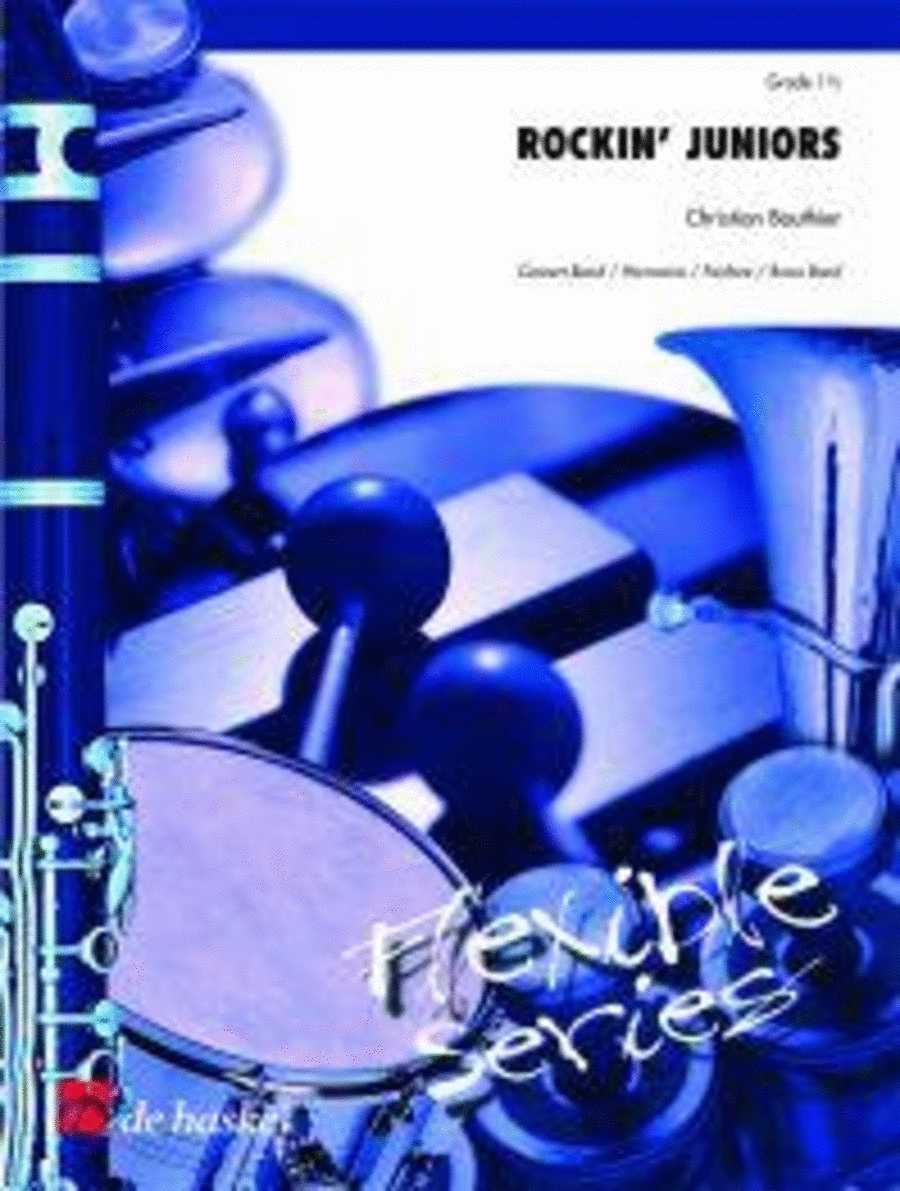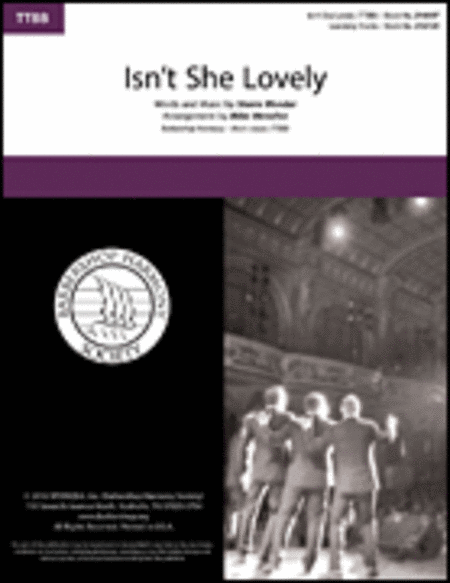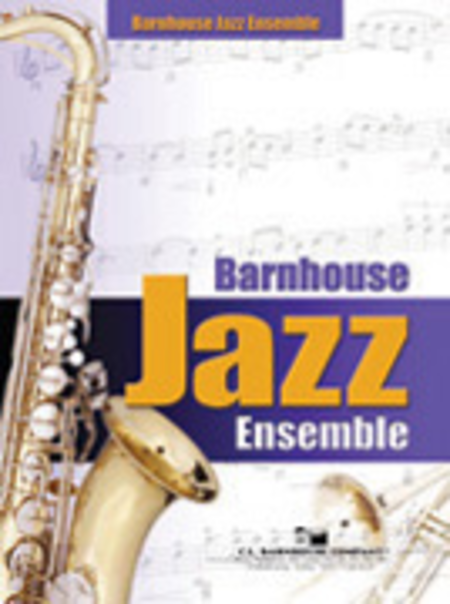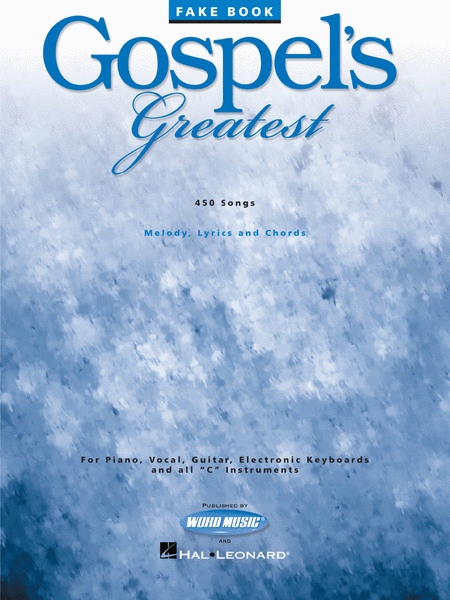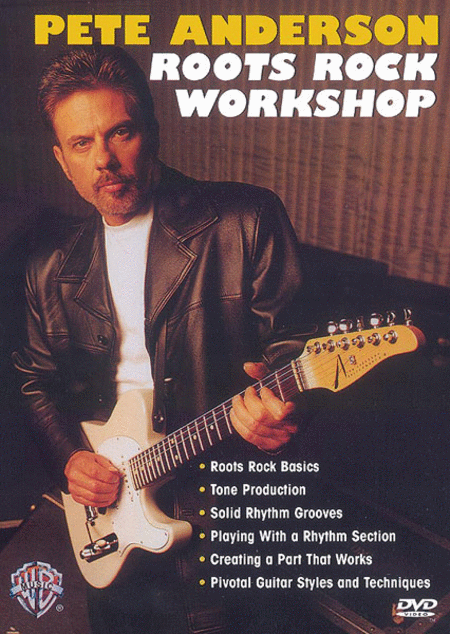|
| Rise Up Singing
Paroles et Accords [Partition]
Hal Leonard
The Group Singing Songbook. By Various. Vocal. Size 9.5x12 inches. 281 pages. Pu...(+)
The Group Singing
Songbook. By Various.
Vocal. Size 9.5x12
inches. 281 pages.
Published by Hal Leonard.
(1)$39.99 - Voir plus => AcheterDélais: 24 hours - In Stock | | | |
| Rise Up Singing
Paroles et Accords [Partition]
Hal Leonard
Arranged by Peter Blood, Annie Patterson. Vocal. Size 7.5x10.5 inches. 283 pages...(+)
Arranged by Peter Blood,
Annie Patterson. Vocal.
Size 7.5x10.5 inches. 283
pages. Published by Hal
Leonard.
(1)$34.99 - Voir plus => AcheterDélais: 24 hours - In Stock | | | |
| Bass Basics (2-DVD Set)
Basse electrique [DVD] - Débutant
EMedia
| | | |
| Double Bass Starter
Contre Basse [Partition + CD] - Facile
De Haske Publications
Double Bass - easy SKU: BT.DHP-1115113-400 22 Pieces in various styles...(+)
Double Bass - easy
SKU:
BT.DHP-1115113-400
22 Pieces in various
styles. Composed by
Ruud van der Meulen. Book
with CD. Composed 2011.
32 pages. De Haske
Publications #DHP
1115113-400. Published by
De Haske Publications
(BT.DHP-1115113-400).
ISBN 9789043139205.
9x12 inches.
English-German-French-Dut
ch. In Double
Bass Starter you will
find a variety of tunes
for beginner double bass
players - young as well
as old. It is a fantastic
album, with a solid
methodical structure. A
range of styles is
featured, from classical
to jazz and pop. The
tunes can be picked or
bowed. The CD features
demo tracks together with
play-along tracks for
each piece.
In
Double Bass
Starter zijn
verschillende stukken
voor beginners op de
contrabas verzameld. Het
is zowel een geweldig
speelboek als een goed
doordachte aanvulling op
het gebruikelijke
lesmateriaal. Allerlei
stijlen passerende revue
- van klassiek tot pop.
Alle stukken kunnen zowel
pizzicato als con arco
worden
gespeeld.
In
Double Bass
Starter sind
vielfältige Stu?cke
fu?r Anfänger auf dem
Kontrabass versammelt. Es
ist zugleich ein
fantastisches Spielbuch
und sehr lehrreiches
Zusatzmaterial fu?r den
Unterricht mit einem
durchdachten methodischen
Aufbau. Allerlei Stile
kommen darin an die Reihe
- von Klassik u?ber Jazz
bis hin zu Pop. Alle
Stu?cke können sowohl
gezupft als auch
gestrichen werden.Die CD
bietet sowohl Demo- als
auch Play-Along Tracks
an.
Double Bass
Starter propose de
nombreuses pièces de
style divers (classique,
jazz ou pop),
arrangées pour
contrebassiste
débutant. Chaque
partition contient un
large éventail de
compléments
pédagogiques qui
sâ??intégreront
facilement votre
méthode
dâ??apprentissage. Ce
fantastique ouvrage offre
la possibilité de
jouer en pizzicato ou en
legato.
In
Double Bass
Starter troverete una
variet di pezzi per
avviare i principianti
allo studio del
contrabbasso. Oltre al
materiale pedagogico
utile a supportare
l'insegnamento, vengono
anche trattati tutti i
generi musicali dalla
classica al jazz al
pop. $25.95 - Voir plus => AcheterDélais: 2 to 3 weeks | | | |
| Buskers Fake Book All Time Hit
Piano seul
Music Sales
| | | |
| The New First Gig
Basse electrique, Batterie
C.L. Barnhouse
By Paul Clark, Andy Clark. Combo Book. Bass and drums book. Composed 1990. Publi...(+)
By Paul Clark, Andy
Clark. Combo Book. Bass
and drums book. Composed
1990. Published by C.L.
Barnhouse.
$11.95 - Voir plus => AcheterDélais: 1 to 2 weeks | | | |
| The New First Gig
Bass Clef Instruments
C.L. Barnhouse
By Paul Clark, Andy Clark. Combo Book. Bass Clef instruments book. Composed 1990...(+)
By Paul Clark, Andy
Clark. Combo Book. Bass
Clef instruments book.
Composed 1990. Published
by C.L. Barnhouse.
$7.95 - Voir plus => AcheterDélais: 1 to 2 weeks | | | |
| Everglades (River of Grass) [Conducteur]
Theodore Presser Co.
Band Bass Clarinet, Bassoon 1, Bassoon 2, Clarinet, Clarinet 1, Clarinet 2, Clar...(+)
Band Bass Clarinet,
Bassoon 1, Bassoon 2,
Clarinet, Clarinet 1,
Clarinet 2, Clarinet 3,
Contrabass Clarinet,
Contrabassoon, Double
Bass, English Horn,
Euphonium, Flute 1, Flute
2, Horn 1, Horn 2, Horn
3, Horn 4, Oboe 1, Oboe
2, Percussion 1 and more.
SKU: PR.16500101F
Mvt. 1 from Symphony
No. 6 (Three Places in
the East). Composed
by Dan Welcher. Full
score. 52 pages. Theodore
Presser Company
#165-00101F. Published by
Theodore Presser Company
(PR.16500101F). ISBN
9781491131725. UPC:
680160680252. Ever
since the success of my
series of wind ensemble
works Places in the West,
I've been wanting to
write a companion piece
for national parks on the
other side of the north
American continent. The
earlier work, consisting
of GLACIER, THE
YELLOWSTONE FIRES,
ARCHES, and ZION, spanned
some twenty years of my
composing life, and since
the pieces called for
differing groups of
instruments, and were in
slightly different styles
from each other, I never
considered them to be
connected except in their
subject matter. In their
depiction of both the
scenery and the human
history within these
wondrous places, they had
a common goal: awaking
the listener to the
fragile beauty that is in
them; and calling
attention to the ever
more crucial need for
preservation and
protection of these wild
places, unique in all the
world. With this new
work, commissioned by a
consortium of college and
conservatory wind
ensembles led by the
University of Georgia, I
decided to build upon
that same model---but to
solidify the process. The
result, consisting of
three movements (each
named for a different
national park in the
eastern US), is a
bona-fide symphony. While
the three pieces could be
performed separately,
they share a musical
theme---and also a common
style and
instrumentation. It is a
true symphony, in that
the first movement is
long and expository, the
second is a rather
tightly structured
scherzo-with-trio, and
the finale is a true
culmination of the whole.
The first movement,
Everglades, was the
original inspiration for
the entire symphony.
Conceived over the course
of two trips to that
astonishing place (which
the native Americans
called River of Grass,
the subtitle of this
movement), this movement
not only conveys a sense
of the humid, lush, and
even frightening scenery
there---but also an
overview of the entire
settling-of- Florida
experience. It contains
not one, but two native
American chants, and also
presents a view of the
staggering influence of
modern man on this
fragile part of the
world. Beginning with a
slow unfolding marked
Heavy, humid, the music
soon presents a gentle,
lyrical theme in the solo
alto saxophone. This
theme, which goes through
three expansive phrases
with breaks in between,
will appear in all three
movements of the
symphony. After the mood
has been established, the
music opens up to a rich,
warm setting of a
Cherokee morning song,
with the simple happiness
that this part of Florida
must have had prior to
the nineteenth century.
This music, enveloping
and comforting, gradually
gives way to a more
frenetic, driven section
representative of the
intrusion of the white
man. Since Florida was
populated and developed
largely due to the
introduction of a train
system, there's a
suggestion of the
mechanized iron horse
driving straight into the
heartland. At that point,
the native Americans
become considerably less
gentle, and a second
chant seems to stand in
the way of the intruder;
a kind of warning song.
The second part of this
movement shows us the
great swampy center of
the peninsula, with its
wildlife both in and out
of the water. A new theme
appears, sad but noble,
suggesting that this land
is precious and must be
protected by all the
people who inhabit it. At
length, the morning song
reappears in all its
splendor, until the
sunset---with one last
iteration of the warning
song in the solo piccolo.
Functioning as a scherzo,
the second movement,
Great Smoky Mountains,
describes not just that
huge park itself, but one
brave soul's attempt to
climb a mountain there.
It begins with three
iterations of the
UR-theme (which began the
first movement as well),
but this time as up-tempo
brass fanfares in
octaves. Each time it
begins again, the theme
is a little slower and
less confident than the
previous time---almost as
though the hiker were
becoming aware of the
daunting mountain before
him. But then, a steady,
quick-pulsed ostinato
appears, in a constantly
shifting meter system of
2/4- 3/4 in alteration,
and the hike has begun.
Over this, a slower new
melody appears, as the
trek up the mountain
progresses. It's a big
mountain, and the ascent
seems to take quite
awhile, with little
breaks in the hiker's
stride, until at length
he simply must stop and
rest. An oboe solo, over
several free cadenza-like
measures, allows us (and
our friend the hiker) to
catch our breath, and
also to view in the
distance the rocky peak
before us. The goal is
somehow even more
daunting than at first,
being closer and thus
more frighteningly steep.
When we do push off
again, it's at a slower
pace, and with more
careful attention to our
footholds as we trek over
broken rocks. Tantalizing
little views of the
valley at every
switchback make our
determination even
stronger. Finally, we
burst through a stand of
pines and----we're at the
summit! The immensity of
the view is overwhelming,
and ultimately humbling.
A brief coda, while we
sit dazed on the rocks,
ends the movement in a
feeling of triumph. The
final movement, Acadia,
is also about a trip. In
the summer of 2014, I
took a sailing trip with
a dear friend from North
Haven, Maine, to the
southern coast of Mt.
Desert Island in Acadia
National Park. The
experience left me both
exuberant and exhausted,
with an appreciation for
the ocean that I hadn't
had previously. The
approach to Acadia
National Park by water,
too, was thrilling: like
the difference between
climbing a mountain on
foot with riding up on a
ski-lift, I felt I'd
earned the right to be
there. The music for this
movement is entirely
based on the opening
UR-theme. There's a sense
of the water and the
mysterious, quiet deep
from the very beginning,
with seagulls and bell
buoys setting the scene.
As we leave the harbor,
the theme (in a canon
between solo euphonium
and tuba) almost seems as
if large subaquatic
animals are observing our
departure. There are
three themes (call them
A, B and C) in this
seafaring journey---but
they are all based on the
UR theme, in its original
form with octaves
displaced, in an
upside-down form, and in
a backwards version as
well. (The ocean, while
appearing to be
unchanging, is always
changing.) We move out
into the main channel
(A), passing several
islands (B), until we
reach the long draw that
parallels the coastline
called Eggemoggin Reach,
and a sudden burst of new
speed (C). Things
suddenly stop, as if the
wind had died, and we
have a vision: is that
really Mt. Desert Island
we can see off the port
bow, vaguely in the
distance? A chorale of
saxophones seems to
suggest that. We push off
anew as the chorale ends,
and go through all three
themes again---but in
different
instrumentations, and
different keys. At the
final tack-turn, there it
is, for real: Mt. Desert
Island, big as life.
We've made it. As we pull
into the harbor, where
we'll secure the boat for
the night, there's a
feeling of achievement.
Our whale and dolphin
friends return, and we
end our journey with
gratitude and
celebration. I am
profoundly grateful to
Jaclyn Hartenberger,
Professor of Conducting
at the University of
Georgia, for leading the
consortium which provided
the commissioning of this
work. $36.99 - Voir plus => AcheterDélais: 2 to 3 weeks | | | |
| John Patitucci: John Patitucci, Electric Bass: Complete (DVD)
Basse electrique [DVD]
Alfred Publishing
(Includes Electric Bass 1 and 2) Performed by John Patitucci. Instructional vide...(+)
(Includes Electric Bass 1
and 2) Performed by John
Patitucci. Instructional
video: DVD for electric
bass guitar. Series:
Alfred's Artist Series.
Published by Alfred
Publishing.
(2)$39.95 - Voir plus => AcheterDélais: 1 to 2 weeks | | | |
| Rock Bass
Basse electrique [Partition + CD] - Facile
AMA Verlag
Rock, Blues, Reggae, Funk, Jazz, etc. By Jacky Reznicek. For Electric Bass. Lick...(+)
Rock, Blues, Reggae,
Funk, Jazz, etc. By Jacky
Reznicek. For Electric
Bass. Licks and phrases.
AMA Verlag. Rock. Level:
Beginning-Intermediate.
Book/CD Set. Size
8.25x11.625. 152 pages.
Published by AMA Verlag.
ISBN 3932587987.
$26.95 - Voir plus => AcheterDélais: 1 to 2 weeks | | | |
| Symphony No. 6 [Conducteur]
Theodore Presser Co.
Band SKU: PR.16500104F Three Places in the East. Composed by Dan W...(+)
Band SKU:
PR.16500104F Three
Places in the East.
Composed by Dan Welcher.
Full score. Theodore
Presser Company
#165-00104F. Published by
Theodore Presser Company
(PR.16500104F). ISBN
9781491132159. UPC:
680160681082. Ever
since the success of my
series of wind ensemble
works Places in the West,
I've been wanting to
write a companion piece
for national parks on the
other side of the north
American continent. The
earlier work, consisting
of GLACIER, THE
YELLOWSTONE FIRES,
ARCHES, and ZION, spanned
some twenty years of my
composing life, and since
the pieces called for
differing groups of
instruments, and were in
slightly different styles
from each other, I never
considered them to be
connected except in their
subject matter. In their
depiction of both the
scenery and the human
history within these
wondrous places, they had
a common goal: awaking
the listener to the
fragile beauty that is in
them; and calling
attention to the ever
more crucial need for
preservation and
protection of these wild
places, unique in all the
world. With this new
work, commissioned by a
consortium of college and
conservatory wind
ensembles led by the
University of Georgia, I
decided to build upon
that same model---but to
solidify the process. The
result, consisting of
three movements (each
named for a different
national park in the
eastern US), is a
bona-fide symphony. While
the three pieces could be
performed separately,
they share a musical
theme---and also a common
style and
instrumentation. It is a
true symphony, in that
the first movement is
long and expository, the
second is a rather
tightly structured
scherzo-with-trio, and
the finale is a true
culmination of the whole.
The first movement,
Everglades, was the
original inspiration for
the entire symphony.
Conceived over the course
of two trips to that
astonishing place (which
the native Americans
called River of Grass,
the subtitle of this
movement), this movement
not only conveys a sense
of the humid, lush, and
even frightening scenery
there---but also an
overview of the entire
settling-of- Florida
experience. It contains
not one, but two native
American chants, and also
presents a view of the
staggering influence of
modern man on this
fragile part of the
world. Beginning with a
slow unfolding marked
Heavy, humid, the music
soon presents a gentle,
lyrical theme in the solo
alto saxophone. This
theme, which goes through
three expansive phrases
with breaks in between,
will appear in all three
movements of the
symphony. After the mood
has been established, the
music opens up to a rich,
warm setting of a
Cherokee morning song,
with the simple happiness
that this part of Florida
must have had prior to
the nineteenth century.
This music, enveloping
and comforting, gradually
gives way to a more
frenetic, driven section
representative of the
intrusion of the white
man. Since Florida was
populated and developed
largely due to the
introduction of a train
system, there's a
suggestion of the
mechanized iron horse
driving straight into the
heartland. At that point,
the native Americans
become considerably less
gentle, and a second
chant seems to stand in
the way of the intruder;
a kind of warning song.
The second part of this
movement shows us the
great swampy center of
the peninsula, with its
wildlife both in and out
of the water. A new theme
appears, sad but noble,
suggesting that this land
is precious and must be
protected by all the
people who inhabit it. At
length, the morning song
reappears in all its
splendor, until the
sunset---with one last
iteration of the warning
song in the solo piccolo.
Functioning as a scherzo,
the second movement,
Great Smoky Mountains,
describes not just that
huge park itself, but one
brave soul's attempt to
climb a mountain there.
It begins with three
iterations of the
UR-theme (which began the
first movement as well),
but this time as up-tempo
brass fanfares in
octaves. Each time it
begins again, the theme
is a little slower and
less confident than the
previous time---almost as
though the hiker were
becoming aware of the
daunting mountain before
him. But then, a steady,
quick-pulsed ostinato
appears, in a constantly
shifting meter system of
2/4- 3/4 in alteration,
and the hike has begun.
Over this, a slower new
melody appears, as the
trek up the mountain
progresses. It's a big
mountain, and the ascent
seems to take quite
awhile, with little
breaks in the hiker's
stride, until at length
he simply must stop and
rest. An oboe solo, over
several free cadenza-like
measures, allows us (and
our friend the hiker) to
catch our breath, and
also to view in the
distance the rocky peak
before us. The goal is
somehow even more
daunting than at first,
being closer and thus
more frighteningly steep.
When we do push off
again, it's at a slower
pace, and with more
careful attention to our
footholds as we trek over
broken rocks. Tantalizing
little views of the
valley at every
switchback make our
determination even
stronger. Finally, we
burst through a stand of
pines and----we're at the
summit! The immensity of
the view is overwhelming,
and ultimately humbling.
A brief coda, while we
sit dazed on the rocks,
ends the movement in a
feeling of triumph. The
final movement, Acadia,
is also about a trip. In
the summer of 2014, I
took a sailing trip with
a dear friend from North
Haven, Maine, to the
southern coast of Mt.
Desert Island in Acadia
National Park. The
experience left me both
exuberant and exhausted,
with an appreciation for
the ocean that I hadn't
had previously. The
approach to Acadia
National Park by water,
too, was thrilling: like
the difference between
climbing a mountain on
foot with riding up on a
ski-lift, I felt I'd
earned the right to be
there. The music for this
movement is entirely
based on the opening
UR-theme. There's a sense
of the water and the
mysterious, quiet deep
from the very beginning,
with seagulls and bell
buoys setting the scene.
As we leave the harbor,
the theme (in a canon
between solo euphonium
and tuba) almost seems as
if large subaquatic
animals are observing our
departure. There are
three themes (call them
A, B and C) in this
seafaring journey---but
they are all based on the
UR theme, in its original
form with octaves
displaced, in an
upside-down form, and in
a backwards version as
well. (The ocean, while
appearing to be
unchanging, is always
changing.) We move out
into the main channel
(A), passing several
islands (B), until we
reach the long draw that
parallels the coastline
called Eggemoggin Reach,
and a sudden burst of new
speed (C). Things
suddenly stop, as if the
wind had died, and we
have a vision: is that
really Mt. Desert Island
we can see off the port
bow, vaguely in the
distance? A chorale of
saxophones seems to
suggest that. We push off
anew as the chorale ends,
and go through all three
themes again---but in
different
instrumentations, and
different keys. At the
final tack-turn, there it
is, for real: Mt. Desert
Island, big as life.
We've made it. As we pull
into the harbor, where
we'll secure the boat for
the night, there's a
feeling of achievement.
Our whale and dolphin
friends return, and we
end our journey with
gratitude and
celebration. I am
profoundly grateful to
Jaclyn Hartenberger,
Professor of Conducting
at the University of
Georgia, for leading the
consortium which provided
the commissioning of this
work. $90.00 - Voir plus => AcheterDélais: 2 to 3 weeks | | | |
| Rockin' Juniors
Ensemble de cuivres [Conducteur et Parties séparées] - Débutant
De Haske Publications
Brass Band - Grade 1.5 SKU: BT.DHP-1064156-030 Composed by Christian Bout...(+)
Brass Band - Grade 1.5
SKU:
BT.DHP-1064156-030
Composed by Christian
Bouthier. Flexible 6
Series. Set (Score &
Parts). Composed 2006. De
Haske Publications #DHP
1064156-030. Published by
De Haske Publications
(BT.DHP-1064156-030).
9x12 inches.
English-German-French-Dut
ch. Young people
have their whole future
in front of them. Such a
message is reflected in
this fresh and sparkling
short work by Christian
Bouthier. It is composed
for a flexible line-up,
with each part plays a
significant role meaning
there is something of
interest for all players.
The lively rock tempo is
maintained throughout,
providing an easy work
which is full of energy!
Wie de jeugd
heeft, heeft de toekomst
- en dat wordt duidelijk
weerspiegeld in het
temperamentvolle
rockin'
Juniors:een fris,
kort werk voor een
varabele bezetting,
gecomponeerd door
Christian Bouthier. Het
is voor alle
spelersboeiend, want elke
stem speelt een
belangrijke rol. Het
levendige rocktempo
blijft steeds
gehandhaafd: de energie
spat ervan
af!
Junge Menschen
haben die Zukunft noch
vor sich - das spiegelt
sich in Rockin’
Juniors wider, einem
heiteren, kurzen Stück
für sechsstimmig
variable Besetzung von
Christian Bouthier.
Rockin’
Juniors ist für
alle Spieler interessant,
da jede Stimme eine
bedeutende Rolle spielt.
Das lebhafte, rockige
Tempo wird das ganze
Stück über
beibehalten: Es sprüht
vor Energie!
Les
jeunes ont
l’avenir devant
eux. Tel est le message
véhiculé par cette
composition fraîche et
pétillante de
Christian Bouthier.
Structurée pour
ensemble instrumentation
variable,
Rockin’
Juniors se
développe sur un rock
soutenu. Chaque voix est
importante et doit
être entendue. Une
pièce énergique et
solidement charpentée
! $70.95 - Voir plus => AcheterDélais: 2 to 3 weeks | | | |
| Learn to Play Bass with Metallica
Basse electrique [Partition + Accès audio] - Facile
Cherry Lane
Bass SKU: HL.2500189 Everything You Need To Know About Starting To Pla...(+)
Bass SKU:
HL.2500189
Everything You Need To
Know About Starting To
Play Bass!. By
Metallica. Hal Leonard
Guitar Method. Metal,
Hard Rock and
Instructional. Softcover
Audio Online. With bass
tablature, standard
notation, chord names,
instructional text,
instructional photos and
introductory text. 48
pages. Published by
Cherry Lane Music
(HL.2500189). ISBN
9781575603339. UPC:
073999196351. 9x12
inches. Joe Charupakorn
Book/Online
Audio. Discover the
basics of playing bass as
you learn hands-on how to
play more than 35
Metallica songs. Features
instruction by Joe
Charupakorn and audio
tracks with complete
demonstrations of every
lesson. Songs include:
Battery â?¢ Blackened
â?¢ The Call of Ktulu
â?¢ Damage, Inc. â?¢
Enter Sandman â?¢ Eye
of the Beholder â?¢
Fade to Black â?¢ Fuel
â?¢ Hero of the Day
â?¢ Mama Said â?¢
Master of Puppets â?¢
One â?¢ Ride the
Lightning â?¢ Seek and
Destroy â?¢ The
Unforgiven â?¢ Until It
Sleeps â?¢ and more.
Audio is accessed online
using the unique code
inside the book and can
be streamed or
downloaded. The audio
files include PLAYBACK ,
a multi-functional audio
player that allows you to
slow down audio without
changing pitch, set loop
points, change keys, and
pan left or right.
About Hal
Leonard Guitar
Method The
world-famous Hal Leonard
Guitar Method is
preferred by teachers
because it makes them
more effective while
making their job easier.
Students enjoy its
easy-to-follow format
that gives them a solid
music education while
letting them play songs
right away. The Hal
Leonard Guitar Method
provides a complete
system to playing success
which includes three
levels of instruction and
a myriad of play-along
supplemental songbooks
that let students play
great songs while they're
still learning to
play. (7)$19.99 - Voir plus => AcheterDélais: 24 hours - In Stock | | | |
| Acadia [Conducteur]
Theodore Presser Co.
Band Bass Clarinet, Bassoon 1, Bassoon 2, Clarinet, Clarinet 1, Clarinet 2, Clar...(+)
Band Bass Clarinet,
Bassoon 1, Bassoon 2,
Clarinet, Clarinet 1,
Clarinet 2, Clarinet 3,
Contrabass Clarinet,
Contrabassoon, Double
Bass, English Horn,
Euphonium, Flute 1, Flute
2, Horn 1, Horn 2, Horn
3, Horn 4, Oboe 1, Oboe
2, Percussion 1 and more.
SKU: PR.16500103F
Mvt. 3 from Symphony
No. 6 (Three Places in
the East). Composed
by Dan Welcher. Full
score. 60 pages. Theodore
Presser Company
#165-00103F. Published by
Theodore Presser Company
(PR.16500103F). ISBN
9781491131763. UPC:
680160680290. Ever
since the success of my
series of wind ensemble
works Places in the West,
I've been wanting to
write a companion piece
for national parks on the
other side of the north
American continent. The
earlier work, consisting
of GLACIER, THE
YELLOWSTONE FIRES,
ARCHES, and ZION, spanned
some twenty years of my
composing life, and since
the pieces called for
differing groups of
instruments, and were in
slightly different styles
from each other, I never
considered them to be
connected except in their
subject matter. In their
depiction of both the
scenery and the human
history within these
wondrous places, they had
a common goal: awaking
the listener to the
fragile beauty that is in
them; and calling
attention to the ever
more crucial need for
preservation and
protection of these wild
places, unique in all the
world. With this new
work, commissioned by a
consortium of college and
conservatory wind
ensembles led by the
University of Georgia, I
decided to build upon
that same model---but to
solidify the process. The
result, consisting of
three movements (each
named for a different
national park in the
eastern US), is a
bona-fide symphony. While
the three pieces could be
performed separately,
they share a musical
theme---and also a common
style and
instrumentation. It is a
true symphony, in that
the first movement is
long and expository, the
second is a rather
tightly structured
scherzo-with-trio, and
the finale is a true
culmination of the whole.
The first movement,
Everglades, was the
original inspiration for
the entire symphony.
Conceived over the course
of two trips to that
astonishing place (which
the native Americans
called River of Grass,
the subtitle of this
movement), this movement
not only conveys a sense
of the humid, lush, and
even frightening scenery
there---but also an
overview of the entire
settling-of- Florida
experience. It contains
not one, but two native
American chants, and also
presents a view of the
staggering influence of
modern man on this
fragile part of the
world. Beginning with a
slow unfolding marked
Heavy, humid, the music
soon presents a gentle,
lyrical theme in the solo
alto saxophone. This
theme, which goes through
three expansive phrases
with breaks in between,
will appear in all three
movements of the
symphony. After the mood
has been established, the
music opens up to a rich,
warm setting of a
Cherokee morning song,
with the simple happiness
that this part of Florida
must have had prior to
the nineteenth century.
This music, enveloping
and comforting, gradually
gives way to a more
frenetic, driven section
representative of the
intrusion of the white
man. Since Florida was
populated and developed
largely due to the
introduction of a train
system, there's a
suggestion of the
mechanized iron horse
driving straight into the
heartland. At that point,
the native Americans
become considerably less
gentle, and a second
chant seems to stand in
the way of the intruder;
a kind of warning song.
The second part of this
movement shows us the
great swampy center of
the peninsula, with its
wildlife both in and out
of the water. A new theme
appears, sad but noble,
suggesting that this land
is precious and must be
protected by all the
people who inhabit it. At
length, the morning song
reappears in all its
splendor, until the
sunset---with one last
iteration of the warning
song in the solo piccolo.
Functioning as a scherzo,
the second movement,
Great Smoky Mountains,
describes not just that
huge park itself, but one
brave soul's attempt to
climb a mountain there.
It begins with three
iterations of the
UR-theme (which began the
first movement as well),
but this time as up-tempo
brass fanfares in
octaves. Each time it
begins again, the theme
is a little slower and
less confident than the
previous time---almost as
though the hiker were
becoming aware of the
daunting mountain before
him. But then, a steady,
quick-pulsed ostinato
appears, in a constantly
shifting meter system of
2/4- 3/4 in alteration,
and the hike has begun.
Over this, a slower new
melody appears, as the
trek up the mountain
progresses. It's a big
mountain, and the ascent
seems to take quite
awhile, with little
breaks in the hiker's
stride, until at length
he simply must stop and
rest. An oboe solo, over
several free cadenza-like
measures, allows us (and
our friend the hiker) to
catch our breath, and
also to view in the
distance the rocky peak
before us. The goal is
somehow even more
daunting than at first,
being closer and thus
more frighteningly steep.
When we do push off
again, it's at a slower
pace, and with more
careful attention to our
footholds as we trek over
broken rocks. Tantalizing
little views of the
valley at every
switchback make our
determination even
stronger. Finally, we
burst through a stand of
pines and----we're at the
summit! The immensity of
the view is overwhelming,
and ultimately humbling.
A brief coda, while we
sit dazed on the rocks,
ends the movement in a
feeling of triumph. The
final movement, Acadia,
is also about a trip. In
the summer of 2014, I
took a sailing trip with
a dear friend from North
Haven, Maine, to the
southern coast of Mt.
Desert Island in Acadia
National Park. The
experience left me both
exuberant and exhausted,
with an appreciation for
the ocean that I hadn't
had previously. The
approach to Acadia
National Park by water,
too, was thrilling: like
the difference between
climbing a mountain on
foot with riding up on a
ski-lift, I felt I'd
earned the right to be
there. The music for this
movement is entirely
based on the opening
UR-theme. There's a sense
of the water and the
mysterious, quiet deep
from the very beginning,
with seagulls and bell
buoys setting the scene.
As we leave the harbor,
the theme (in a canon
between solo euphonium
and tuba) almost seems as
if large subaquatic
animals are observing our
departure. There are
three themes (call them
A, B and C) in this
seafaring journey---but
they are all based on the
UR theme, in its original
form with octaves
displaced, in an
upside-down form, and in
a backwards version as
well. (The ocean, while
appearing to be
unchanging, is always
changing.) We move out
into the main channel
(A), passing several
islands (B), until we
reach the long draw that
parallels the coastline
called Eggemoggin Reach,
and a sudden burst of new
speed (C). Things
suddenly stop, as if the
wind had died, and we
have a vision: is that
really Mt. Desert Island
we can see off the port
bow, vaguely in the
distance? A chorale of
saxophones seems to
suggest that. We push off
anew as the chorale ends,
and go through all three
themes again---but in
different
instrumentations, and
different keys. At the
final tack-turn, there it
is, for real: Mt. Desert
Island, big as life.
We've made it. As we pull
into the harbor, where
we'll secure the boat for
the night, there's a
feeling of achievement.
Our whale and dolphin
friends return, and we
end our journey with
gratitude and
celebration. I am
profoundly grateful to
Jaclyn Hartenberger,
Professor of Conducting
at the University of
Georgia, for leading the
consortium which provided
the commissioning of this
work. $39.99 - Voir plus => AcheterDélais: 2 to 3 weeks | | | |
| Great Smoky Mountains [Conducteur]
Theodore Presser Co.
Band Bass Clarinet, Bassoon 1, Bassoon 2, Clarinet, Clarinet 1, Clarinet 2, Clar...(+)
Band Bass Clarinet,
Bassoon 1, Bassoon 2,
Clarinet, Clarinet 1,
Clarinet 2, Clarinet 3,
Contrabass Clarinet,
Contrabassoon, Double
Bass, English Horn,
Euphonium, Flute 1, Flute
2, Horn 1, Horn 2, Horn
3, Horn 4, Oboe 1, Oboe
2, Percussion 1 and more.
SKU: PR.16500102F
Mvt. 2 from Symphony
No. 6 (Three Places in
the East). Composed
by Dan Welcher. Full
score. 52 pages. Theodore
Presser Company
#165-00102F. Published by
Theodore Presser Company
(PR.16500102F). ISBN
9781491131749. UPC:
680160680276. Ever
since the success of my
series of wind ensemble
works Places in the West,
I've been wanting to
write a companion piece
for national parks on the
other side of the north
American continent. The
earlier work, consisting
of GLACIER, THE
YELLOWSTONE FIRES,
ARCHES, and ZION, spanned
some twenty years of my
composing life, and since
the pieces called for
differing groups of
instruments, and were in
slightly different styles
from each other, I never
considered them to be
connected except in their
subject matter. In their
depiction of both the
scenery and the human
history within these
wondrous places, they had
a common goal: awaking
the listener to the
fragile beauty that is in
them; and calling
attention to the ever
more crucial need for
preservation and
protection of these wild
places, unique in all the
world. With this new
work, commissioned by a
consortium of college and
conservatory wind
ensembles led by the
University of Georgia, I
decided to build upon
that same model---but to
solidify the process. The
result, consisting of
three movements (each
named for a different
national park in the
eastern US), is a
bona-fide symphony. While
the three pieces could be
performed separately,
they share a musical
theme---and also a common
style and
instrumentation. It is a
true symphony, in that
the first movement is
long and expository, the
second is a rather
tightly structured
scherzo-with-trio, and
the finale is a true
culmination of the whole.
The first movement,
Everglades, was the
original inspiration for
the entire symphony.
Conceived over the course
of two trips to that
astonishing place (which
the native Americans
called River of Grass,
the subtitle of this
movement), this movement
not only conveys a sense
of the humid, lush, and
even frightening scenery
there---but also an
overview of the entire
settling-of- Florida
experience. It contains
not one, but two native
American chants, and also
presents a view of the
staggering influence of
modern man on this
fragile part of the
world. Beginning with a
slow unfolding marked
Heavy, humid, the music
soon presents a gentle,
lyrical theme in the solo
alto saxophone. This
theme, which goes through
three expansive phrases
with breaks in between,
will appear in all three
movements of the
symphony. After the mood
has been established, the
music opens up to a rich,
warm setting of a
Cherokee morning song,
with the simple happiness
that this part of Florida
must have had prior to
the nineteenth century.
This music, enveloping
and comforting, gradually
gives way to a more
frenetic, driven section
representative of the
intrusion of the white
man. Since Florida was
populated and developed
largely due to the
introduction of a train
system, there's a
suggestion of the
mechanized iron horse
driving straight into the
heartland. At that point,
the native Americans
become considerably less
gentle, and a second
chant seems to stand in
the way of the intruder;
a kind of warning song.
The second part of this
movement shows us the
great swampy center of
the peninsula, with its
wildlife both in and out
of the water. A new theme
appears, sad but noble,
suggesting that this land
is precious and must be
protected by all the
people who inhabit it. At
length, the morning song
reappears in all its
splendor, until the
sunset---with one last
iteration of the warning
song in the solo piccolo.
Functioning as a scherzo,
the second movement,
Great Smoky Mountains,
describes not just that
huge park itself, but one
brave soul's attempt to
climb a mountain there.
It begins with three
iterations of the
UR-theme (which began the
first movement as well),
but this time as up-tempo
brass fanfares in
octaves. Each time it
begins again, the theme
is a little slower and
less confident than the
previous time---almost as
though the hiker were
becoming aware of the
daunting mountain before
him. But then, a steady,
quick-pulsed ostinato
appears, in a constantly
shifting meter system of
2/4- 3/4 in alteration,
and the hike has begun.
Over this, a slower new
melody appears, as the
trek up the mountain
progresses. It's a big
mountain, and the ascent
seems to take quite
awhile, with little
breaks in the hiker's
stride, until at length
he simply must stop and
rest. An oboe solo, over
several free cadenza-like
measures, allows us (and
our friend the hiker) to
catch our breath, and
also to view in the
distance the rocky peak
before us. The goal is
somehow even more
daunting than at first,
being closer and thus
more frighteningly steep.
When we do push off
again, it's at a slower
pace, and with more
careful attention to our
footholds as we trek over
broken rocks. Tantalizing
little views of the
valley at every
switchback make our
determination even
stronger. Finally, we
burst through a stand of
pines and----we're at the
summit! The immensity of
the view is overwhelming,
and ultimately humbling.
A brief coda, while we
sit dazed on the rocks,
ends the movement in a
feeling of triumph. The
final movement, Acadia,
is also about a trip. In
the summer of 2014, I
took a sailing trip with
a dear friend from North
Haven, Maine, to the
southern coast of Mt.
Desert Island in Acadia
National Park. The
experience left me both
exuberant and exhausted,
with an appreciation for
the ocean that I hadn't
had previously. The
approach to Acadia
National Park by water,
too, was thrilling: like
the difference between
climbing a mountain on
foot with riding up on a
ski-lift, I felt I'd
earned the right to be
there. The music for this
movement is entirely
based on the opening
UR-theme. There's a sense
of the water and the
mysterious, quiet deep
from the very beginning,
with seagulls and bell
buoys setting the scene.
As we leave the harbor,
the theme (in a canon
between solo euphonium
and tuba) almost seems as
if large subaquatic
animals are observing our
departure. There are
three themes (call them
A, B and C) in this
seafaring journey---but
they are all based on the
UR theme, in its original
form with octaves
displaced, in an
upside-down form, and in
a backwards version as
well. (The ocean, while
appearing to be
unchanging, is always
changing.) We move out
into the main channel
(A), passing several
islands (B), until we
reach the long draw that
parallels the coastline
called Eggemoggin Reach,
and a sudden burst of new
speed (C). Things
suddenly stop, as if the
wind had died, and we
have a vision: is that
really Mt. Desert Island
we can see off the port
bow, vaguely in the
distance? A chorale of
saxophones seems to
suggest that. We push off
anew as the chorale ends,
and go through all three
themes again---but in
different
instrumentations, and
different keys. At the
final tack-turn, there it
is, for real: Mt. Desert
Island, big as life.
We've made it. As we pull
into the harbor, where
we'll secure the boat for
the night, there's a
feeling of achievement.
Our whale and dolphin
friends return, and we
end our journey with
gratitude and
celebration. I am
profoundly grateful to
Jaclyn Hartenberger,
Professor of Conducting
at the University of
Georgia, for leading the
consortium which provided
the commissioning of this
work. $36.99 - Voir plus => AcheterDélais: 2 to 3 weeks | | | |
| Doug Smith Contemporary Instrumental Guitar Acoustic Masterclass - DVD
Guitare [DVD]
Solid Air Records
Doug Smith -- Contemporary Instrumental Guitar. Composed by Doug Smith. Guitar D...(+)
Doug Smith --
Contemporary Instrumental
Guitar. Composed by Doug
Smith. Guitar DVD;
Method/Instruction.
Acoustic Masterclass.
Acoustic. DVD. Solid Air
Records #21-906842.
Published by Solid Air
Records
$29.95 - Voir plus => AcheterDélais: 1 to 2 weeks | | | |
| Camp Jam: Rock Solid: Guitar
Guitare
Guitare classique
Carl Fischer
Chamber Music guitar SKU: CF.CF00003 Rock Technique for Beginners....(+)
Chamber Music guitar
SKU: CF.CF00003
Rock Technique for
Beginners. Composed
by Steve Freeman.
Perfect. Play Along. Book
and CD. With Standard
notation. 128 pages. Carl
Fischer Music #CF00003.
Published by Carl Fischer
Music (CF.CF00003).
ISBN 9780825870910.
UPC: 798408070915. 9 X 12
inches. Camp Jam:
Rock Solid: Guitar is
jam-packed with
techniques to have you
playing like a pro! The
Rock Rhythm and Grooves
section covers everything
you need to know about
chords and rhythm
playing, Rock Chops
refines skills to get you
soloing like a true rock
star, and Rock Styles
includes helpful playing
tips and tricks on all of
the different styles and
eras of Rock music.
Author and guitar
instructor Steve Freeman
is the National Director
of Camp Jam, and his
years of experience as a
professional guitarist
will have you learning
from one of the best in
the business!
About Camp
Jam: Rock
Solid The
official books of the
popular Camp Jam Summer
Rock Camps, the Camp Jam:
Rock Solid series takes
the aspiring rock
musician from beginner
level to playing in a
rock
’nââ
‚¬â„¢ roll band in
no time at all! Developed
by some of the greatest
rock musicians in the
business, including
Liberty DeVitto (former
drummer for Billy Joel),
Jim Peterik
(guitarist/vocalist for
Survivor), Peter Stroud
and Tim Smith (guitarist
and bassist for Sheryl
Crow), the Camp Jam
instructional program is
packed with essential
playing techniques that
can be learned quickly
and easily. Perfect for
all musicians - whether
you are just starting out
or you've been playing a
few months - the lessons
and exercises are not
only fun to play, but are
proven effective to get
budding rock stars
jamming right away! With
Camp Jam locations now
established in 16 cities
across the United States,
here's your chance to get
in on all the action,
learn the Camp Jam
playing secrets, and
start living the
dream! $29.99 - Voir plus => AcheterDélais: 1 to 2 weeks | | | |
| Essential Rock Grooves for Bass
Basse electrique [DVD]
Berklee
Berklee Workshop Series. By Danny Morris. Berklee Dvd. DVD . Size 5.25x7.5 inche...(+)
Berklee Workshop Series.
By Danny Morris. Berklee
Dvd. DVD . Size 5.25x7.5
inches. Published by
Berklee Press.
(1)$19.95 - Voir plus => AcheterDélais: 3 to 5 business days | | | |
| Rockin' Juniors [Conducteur] - Débutant
De Haske Publications
6-Part Flexible Band - Grade 1.5 SKU: BT.DHP-1064156-216 Composed by Chri...(+)
6-Part Flexible Band -
Grade 1.5 SKU:
BT.DHP-1064156-216
Composed by Christian
Bouthier. Flexible 6
Series. Score Only.
Composed 2006. 12 pages.
De Haske Publications
#DHP 1064156-216.
Published by De Haske
Publications
(BT.DHP-1064156-216).
9x12 inches.
English-German-French-Dut
ch. Young people
have their whole future
in front of them. Such a
message is reflected in
this fresh and sparkling
short work by Christian
Bouthier. It is composed
for a flexible line-up,
with each part plays a
significant role meaning
there is something of
interest for all players.
The lively rock tempo is
maintained throughout,
providing an easy work
which is full of energy!
Wie de jeugd
heeft, heeft de toekomst
- en dat wordt duidelijk
weerspiegeld in het
temperamentvolle
rockin'
Juniors:een fris,
kort werk voor een
varabele bezetting,
gecomponeerd door
Christian Bouthier. Het
is voor alle
spelersboeiend, want elke
stem speelt een
belangrijke rol. Het
levendige rocktempo
blijft steeds
gehandhaafd: de energie
spat ervan
af!
Junge Menschen
haben die Zukunft noch
vor sich - das spiegelt
sich in Rockin’
Juniors wider, einem
heiteren, kurzen Stück
für sechsstimmig
variable Besetzung von
Christian Bouthier.
Rockin’
Juniors ist für
alle Spieler interessant,
da jede Stimme eine
bedeutende Rolle spielt.
Das lebhafte, rockige
Tempo wird das ganze
Stück über
beibehalten: Es sprüht
vor Energie!
Les
jeunes ont
l’avenir devant
eux. Tel est le message
véhiculé par cette
composition fraîche et
pétillante de
Christian Bouthier.
Structurée pour
ensemble instrumentation
variable,
Rockin’
Juniors se
développe sur un rock
soutenu. Chaque voix est
importante et doit
être entendue. Une
pièce énergique et
solidement charpentée
! $17.95 - Voir plus => AcheterDélais: 2 to 3 weeks | | | |
| Rockin' Juniors [Conducteur et Parties séparées] - Débutant
De Haske Publications
6-Part Flexible Band - Grade 1.5 SKU: BT.DHP-1064156-015 Composed by Chri...(+)
6-Part Flexible Band -
Grade 1.5 SKU:
BT.DHP-1064156-015
Composed by Christian
Bouthier. Flexible 6
Series. Set (Score &
Parts). Composed 2006. De
Haske Publications #DHP
1064156-015. Published by
De Haske Publications
(BT.DHP-1064156-015).
9x12 inches.
English-German-French-Dut
ch. Young people
have their whole future
in front of them. Such a
message is reflected in
this fresh and sparkling
short work by Christian
Bouthier. It is composed
for a flexible line-up,
with each part plays a
significant role meaning
there is something of
interest for all players.
The lively rock tempo is
maintained throughout,
providing an easy work
which is full of energy!
Wie de jeugd
heeft, heeft de toekomst
- en dat wordt duidelijk
weerspiegeld in het
temperamentvolle
rockin'
Juniors:een fris,
kort werk voor een
varabele bezetting,
gecomponeerd door
Christian Bouthier. Het
is voor alle
spelersboeiend, want elke
stem speelt een
belangrijke rol. Het
levendige rocktempo
blijft steeds
gehandhaafd: de energie
spat ervan
af!
Junge Menschen
haben die Zukunft noch
vor sich - das spiegelt
sich in Rockin’
Juniors wider, einem
heiteren, kurzen Stück
für sechsstimmig
variable Besetzung von
Christian Bouthier.
Rockin’
Juniors ist für
alle Spieler interessant,
da jede Stimme eine
bedeutende Rolle spielt.
Das lebhafte, rockige
Tempo wird das ganze
Stück über
beibehalten: Es sprüht
vor Energie!
Les
jeunes ont
l’avenir devant
eux. Tel est le message
véhiculé par cette
composition fraîche et
pétillante de
Christian Bouthier.
Structurée pour
ensemble instrumentation
variable,
Rockin’
Juniors se
développe sur un rock
soutenu. Chaque voix est
importante et doit
être entendue. Une
pièce énergique et
solidement charpentée
! $91.95 - Voir plus => AcheterDélais: 2 to 3 weeks | | | |
| Weather Report
Ensemble de cuivres [Conducteur et Parties séparées] - Facile
Gobelin Music Publications
Brass Band - Grade 2 SKU: BT.GOB-000659-030 Composed by Albert Dam. Set (...(+)
Brass Band - Grade 2
SKU:
BT.GOB-000659-030
Composed by Albert Dam.
Set (Score & Parts). 62
pages. Gobelin Music
Publications #GOB
000659-030. Published by
Gobelin Music
Publications
(BT.GOB-000659-030).
The weather
inspired Albert Dam to
compose Weather Report.
The three parts
Windy (rock), Misty
(ballad) and Sunny
(calypso) want to make us
believe that the weather
will be changeable.
Stable or not, the music
is solid as a rock.
Het weer
inspireerde Albert Dam
tot het schrijven van
Weather Report.
De
drie delen Windy (rock),
Misty (ballad) en Sunny
(calypso) willen ons doen
geloven dat het weer
afwisselend zal zijn.
Stabiel of niet, de
muziek staatals een
huis!
Dit werk is
opgenomen in het Klein
repertorium, brassband -
5e divisie. $98.95 - Voir plus => AcheterDélais: 2 to 3 weeks | | | |
| Weather Report
Ensemble de cuivres [Conducteur] - Facile
Gobelin Music Publications
Brass Band - Grade 2 SKU: BT.GOB-000659-130 Composed by Albert Dam. Score...(+)
Brass Band - Grade 2
SKU:
BT.GOB-000659-130
Composed by Albert Dam.
Score Only. 44 pages.
Gobelin Music
Publications #GOB
000659-130. Published by
Gobelin Music
Publications
(BT.GOB-000659-130).
The weather
inspired Albert Dam to
compose Weather Report.
The three parts
Windy (rock), Misty
(ballad) and Sunny
(calypso) want to make us
believe that the weather
will be changeable.
Stable or not, the music
is solid as a rock.
Het weer
inspireerde Albert Dam
tot het schrijven van
Weather Report.
De
drie delen Windy (rock),
Misty (ballad) en Sunny
(calypso) willen ons doen
geloven dat het weer
afwisselend zal zijn.
Stabiel of niet, de
muziek staatals een
huis!
Dit werk is
opgenomen in het Klein
repertorium, brassband -
5e divisie. $24.95 - Voir plus => AcheterDélais: 2 to 3 weeks | | | |
| Stevie Wonder : Isn't She Lovely - Choral (TTBB A Cappella)
Chorale TTBB
TTBB A Cappella
Barbershop Harmony Society
By Stevie Wonder. Arranged by Mike Menefee. BARBERSHOP HARMONY SOCIETY. Octavo...(+)
By Stevie Wonder.
Arranged
by Mike Menefee.
BARBERSHOP
HARMONY SOCIETY. Octavo.
12
pages. Published by
Barbershop Harmony
Society
$3.20 $3.04 (- 5%) Voir plus => AcheterDélais: 24 hours - In Stock | | | |
| Disorderly Conduct
Ensemble Jazz [Conducteur et Parties séparées] - Facile
C.L. Barnhouse
By Larry Barton. For jazz ensemble. Jazz Ensemble. Barnhouse Easy Jazz. Grade 2....(+)
By Larry Barton. For jazz
ensemble. Jazz Ensemble.
Barnhouse Easy Jazz.
Grade 2.5. Score and set
of parts. Composed 2002.
Duration 2 minutes, 20
seconds. Published by
C.L. Barnhouse
$50.00 - Voir plus => AcheterDélais: 1 to 2 weeks | | | |
| Gospel's Greatest
Ligne De Mélodie, Paroles et Accords [Fake Book] - Intermédiaire
Hal Leonard
For voice and C instrument. Format: fakebook. With vocal melody, lyrics, chord n...(+)
For voice and C
instrument. Format:
fakebook. With vocal
melody, lyrics, chord
names and guitar chord
chart. Gospel and
worship. Series: Hal
Leonard Fake Books. 295
pages. 9x12 inches.
Published by Hal Leonard.
(26)$37.99 - Voir plus => AcheterDélais: 24 hours - In Stock | | | |
| Roots Rock Workshop - DVD
Guitare [DVD]
Alfred Publishing
Pete Anderson. For Guitar. Guitar DVD. Rock. DVD. Published by Alfred Publishing...(+)
Pete Anderson. For
Guitar. Guitar DVD. Rock.
DVD. Published by Alfred
Publishing.
$24.95 - Voir plus => AcheterDélais: 1 to 2 weeks | | |
|
